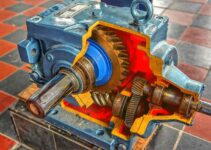In the heart of our modern infrastructure lies an ingenious component often overlooked – the hydraulic hose. These marvels of engineering are designed to withstand extreme conditions, reliably transmitting fluid under high pressure to power various systems.
From construction equipment to industrial machinery and aircraft, hydraulic hoses are the lifeblood that drives these machines.
Page Contents
The Three-Layered Defense: Structure of Hydraulic Hoses
Hydraulic hoses have the unenviable task of operating under intense pressure, often exceeding 2000 PSI, while resisting the constant wear and tear of high-intensity environments.
This is achieved through the carefully engineered structure of the hoses, which consists of three layers – the inner tube, the reinforcement layer, and the outer cover.
Inner Tube: The Fluid Conduit

Source: conthydraulic.com.my
The inner tube is the conduit for the hydraulic fluid. It is usually made from flexible, oil-resistant synthetic rubber that can withstand the fluid’s high temperature and chemical composition. Its flexibility allows the tube to adapt to the motion and bending of machinery without cracking or leaking.
Reinforcement Layer: The Pressure Defender
The second layer, the reinforcement, is arguably the most crucial part of the hose. This layer is typically composed of high-strength steel wire braided or spiraled around the inner tube. Its role is twofold: it provides the hose with the strength to handle high pressure, and it prevents the inner tube from ballooning under that pressure.
This reinforcement is designed to maintain the hose’s structural integrity even in high-stress situations, protecting the inner tube while allowing the hose to flex without kinking.
Outer Cover: The External Shield
The outer cover is the hose’s first line of defense against external factors. It is usually made from tough, abrasion-resistant synthetic rubber. This layer protects the hose from weather conditions, corrosive substances, abrasion, and other potential damage that high-intensity environments may present.
A quality outer cover can drastically extend the lifespan of a hydraulic hose by minimizing external wear and tear.
Maintenance: The Key to Longevity

Source: elliottrentalandequipment.com
While the design of the hydraulic hose is key to its pressure-handling ability, regular inspection and maintenance also play crucial roles. Factors like temperature fluctuations, mechanical stress, and exposure to harsh chemicals can affect a hose’s performance over time.
Routine checks can help identify signs of wear, leakage, or damage, allowing for timely replacement and preventing potential system failure.
Selection: Not All Hoses Are Created Equal
It’s important to note that not all hydraulic hoses are created equal. They come in different sizes, materials, and pressure ratings to cater to a wide range of applications. It’s crucial to select the right hose for the specific application and environment to ensure optimal performance and longevity.
Summary

Source: quadfluiddynamics.com
Hydraulic hoses are unsung heroes of modern machinery, silently operating under immense pressure in high-intensity environments. They leverage meticulously designed structures and durable materials to perform reliably under stressful conditions.
As the world continues to rely heavily on hydraulic systems, the importance of these sturdy hoses cannot be overstated. They truly embody the saying “under pressure, yet unyielding.”





